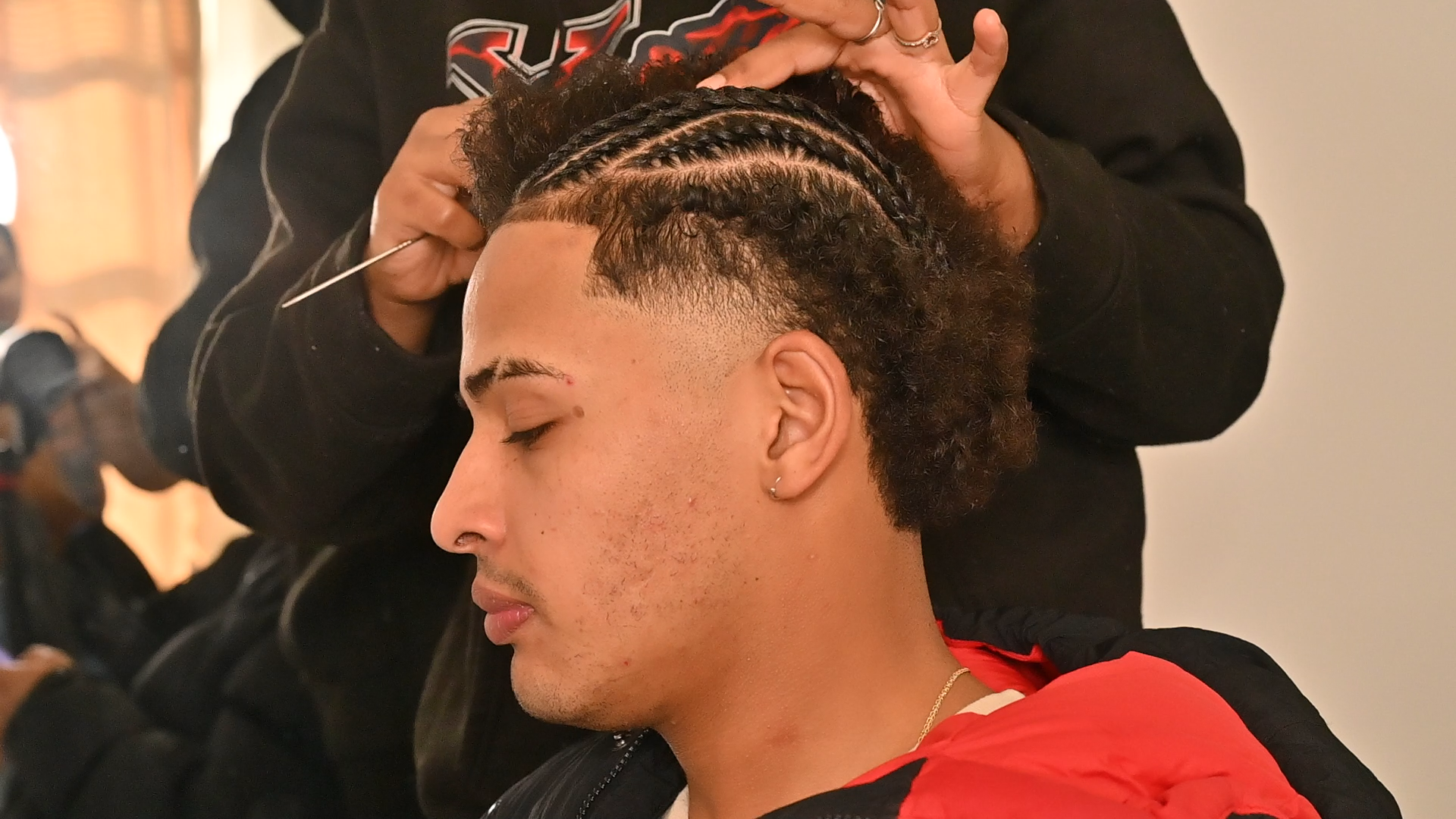CURLS, COILS, TWISTS, BRAIDS:
empowerment & liberation
Maddy Mendes remembers her mother twirling her hair for hours in long braids, loving her hair’s texture. Maddy’s hair helped her fit in growing up in Cape Verde. Today, she is a braider to Latinx, Caribbean, and Cape Verdean hair. The 23-year-old works out of her home in Dorchester, MA, and empowers her clients’ image of themselves. “I don’t believe in cabelo ruim! Who determines what pelo malo is?” Maddy says.
Pelo malo or cabelo ruim in Spanish and Portuguese means lousy hair in English. It is a common term that European descendants in colonies in Latin America and the Caribbean used to denigrate Black, Indigenous, and Brown people.
Caribbeans and Latinxs have used their hair as a path to freedom. They braided escape routes in their heads, stored seeds, and hid maps. Natural hairstyles, like curls, coils, braids, and dreadlocks, have evolved into symbols of liberation, resistance to Eurocentric beauty, and a tool of cultural empowerment.
Choosing to wear natural hair deliberately shows empowerment, and choosing to style natural hair does the same. A braiding session for Maddy can take 2 to 9 hours, requiring her skill and patience, while for the client, it requires determination and a desire for it.
“Straightening and dying hair blond honestly was not the norm like in other countries, including the U.S., where in our communities there has to be the constant reminder that our hair is pelo bonito.”
—Maddy Mendes
Pelo Malo became Pelo Bueno or Cabelo bonito, which means good hair in English, when people of color in Latin America, the Caribbean, and Cape Verde started expressing their pride through music, literature, and hairstyles to erode colonized perspectives of beauty.
In the present, artists such as Robe L Ninho led a cultural decolonization process in Cuba for 15 years. Ninho founded Barbers Streets Cuban Hip Hop C4, a collective of Afro-Cuban hair stylists who tour Cuba while singing, conducting workshops on identity, and promoting literature about hair. He has found hair to be a powerful symbol that provokes a social impact.
Cirleyda Tatis Arzuza, an Afro-Colombian woman born in Cartagena de Indias, is a social communicator and founder of the PeloBueno.Co, a movement that promotes Caribbean Black hair aesthetics through digital platforms and teaching workshops in communities.
The Pelo Bueno movement has spread to Latin American, Caribbean, and Cape Verdean diasporas in the United States and has helped these communities build their cultural identities. Yolanda Arroyo Pizarro is a Puerto Rican writer who promotes the discussion of Afro-Latino identity among children. She wrote Pelo Bueno, a children’s book that defends natural hair, highlights the roots of Afro-Puerto Rican heritage, and instills pride in Caribbean children of color.
In East Boston, artist Jonathan Peña is a son of Colombian and Dominican immigrant parents. “For me, as a Caribbean and Latino, I hold to my features as a prime reference of who I am,” he says, “And portraying myself with my brown skin and my curly hair stands the pride of generational survival.” He writes poems, paints canvas, and takes self-portraits of his identity from toe-to-head, with his hair prominent in his work.

Jonathan Peña’s portraits, to the left, is a photographic record of November 7, 2021.

Jonathan Peña’s portraits, to the right, a photographic record of February 14, 2022.
Maddy immigrated to the U.S. when she was 12. She came with her older sister, who was separated from her mother. Her older sister cared for her and taught her to braid her curly hair. This passion grew into a job that has sustained her identity.
“My hair is pelo bueno, and I braid beautiful hair too, so it stays healthy” -Maddy Mendes
Pelo Bueno’s cultural and historical resistance extends from Cape Verde in the easternmost extension of the Caribbean to the southernmost corner of Latin America. It has broken through borders to endure these communities’ identities and empowerment.
